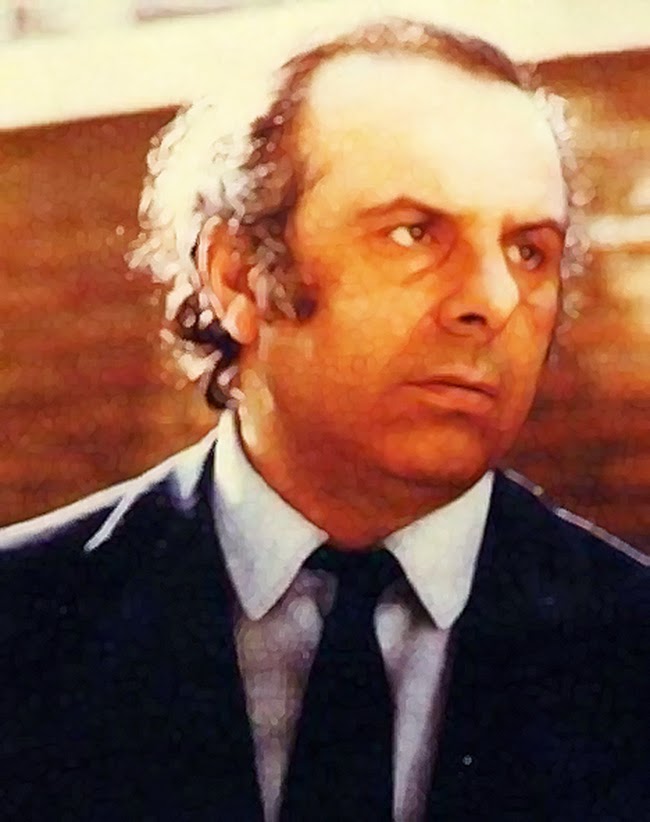Piero Piccioni, aka Piero Morgan, was an Italian pianist, composer and orchestra director. He is remembered, together with Nino Rota and Ennio Morricone, as being the most famous movies’ soundtracks composers, especially with respect to comedies Italian-style.
As musician and composer he also
credits works for more than 300 soundtracks and compositions for films, radio,
television, ballets and orchestra. Piccioni begun writing movies’ soundtracks
in the 50s.
Among the many music scores he had composed, we wish to highlight that “Colpo Rovente”, created for a
poliziesco/thriller movie in 1969 which was markedly quite innovative for its
time in terms of determination and psych-noir
developments. The movie written and
directed by Piero Zuffi who, for his only movie direction chose Ennio Flaiano as
his collaborator, Carmelo Bene (dubbed
excellently by Ferruccio Amendola) as the leading actor and actress Barbara
Bouchet who was then only a debutant to show
one of the very first front nudes ever uncensored
in Italy.
The movie starts with the finding of a rich businessman’s dead body in the streets of New York. The man was involved in drug-smuggling. The investigation is handed over to Police Captain Frank Barin who goes under-cover as a violent biker to detect who’s leading the pusher. Notwithstanding his true identity is later discovered, Barin manages to disclose the identity of the people running the organization with exception of the murderer. The truth is that the assassin is Barin himself ; he killed the businessman to retrieve some of the cold cases that his superiors had taken away from him time before.
The movie score was released in 1970
by the Italian Rca on the prestigious sp 8000 collection which envisaged
a 1000 copies limited edition release.
Side A of Record opens with
“Colpo Rovente”, the movie soundtrack supported by powerful brass instruments that confer to the
track a jazz-poliziesco character. The
different pronounced changes in the rhythms are due to the bass breaks and the
percussions contribute to the development of the track in crescendo.
The trombone of Dino Piana is remarkable. The track ends with a gunshot. “Kitandù”, a brief track, follows. Piano, bass
and percussions play master. The
electric bass with its heavy sound mixes
up with percussions holding a rhythm Dusty Fingers style, while
piano sets against the obsessive line of
bass. On final, there are hints of percussions.
“Identikit” is developed as the previous track, here we find a xylophone
that moves along percussions and various effects and gives it all an exotic
effect.
“Lsd” is the fourth track which is quite experimental on first phase
where the orchestra, directed by Piero Piccioni himself, seems concentrated on
the tuning up . Furthermore, the psycho-guitar and the various sinister noises
give the track an anxious sound which after few minutes go back to main theme.
“Eros” is a descriptive track which creates a dreamy and relaxed state ,
the addition of vibratos turn the track into a quite restless one. “Fuoco” is tense and disarticulated, and after few seconds female vocals and
excellent trombone solo are reproduced.
On flip, as first track we find “Easy dreams” , one of
the best of the whole score. The Hammond, played by Antonello Vannucchi, guides
the track with recurrent breaks and
gives it a strong funk character reinforced by the strong wind section as well.
The female vocals, in the last part, highlight the brass counterpoints.
The track “China Town Drugs is in
contraposition between celesta and marimba which confers to its first phase an
oriental connotation and leaves space to a jazz blues theme played on piano.
“Red Hot” is a suspense thriller tune resembling the main theme. “Mexican Dream” is a great melodic theme with
string-orchestra directed by
Gianfranco Plenizio , including a various number of percussions and piano. Within the melody, which develops into Brazilian reminiscences, it is
easy to recognize the classical Piccioni's styles.
An excellent lounge motif is
“Acapulco” where the strings accompany a
melody to the piano that seems to be
inspired by a bossanova and which at times is dubbed by a Hammond. The last track is for nth time, a much
shorter upswing version of the main movie theme.
The movie is, on the whole, quite confused and with an unexpected and
dubious finale. If the movie has passed to history it is mainly due to the
movie soundtrack which has become, for its rarity and beauty, a very
sought-after record by collectors of
sound tracks.
We can very well affirm that the only real big shot was made by Maestro
Piero Piccioni !




